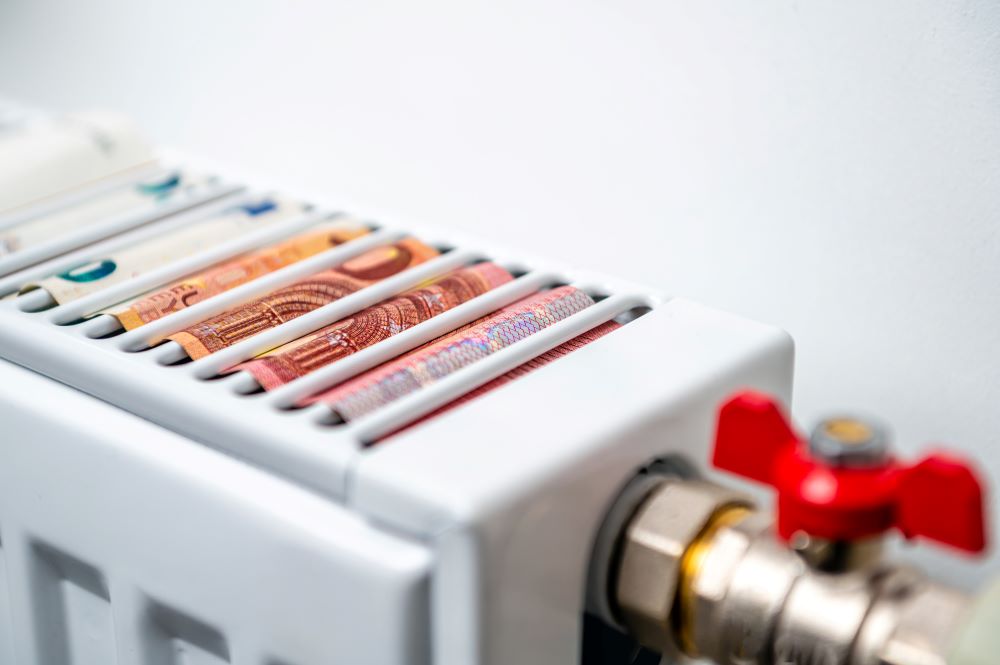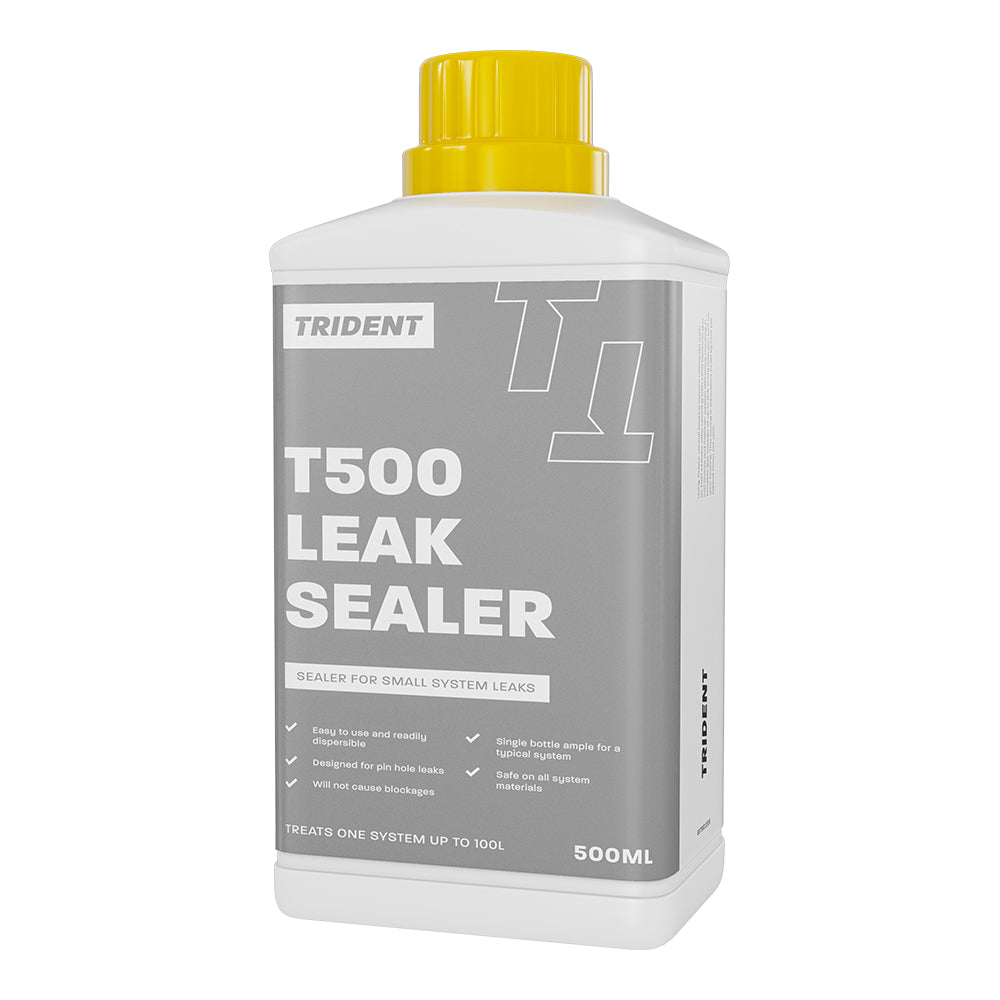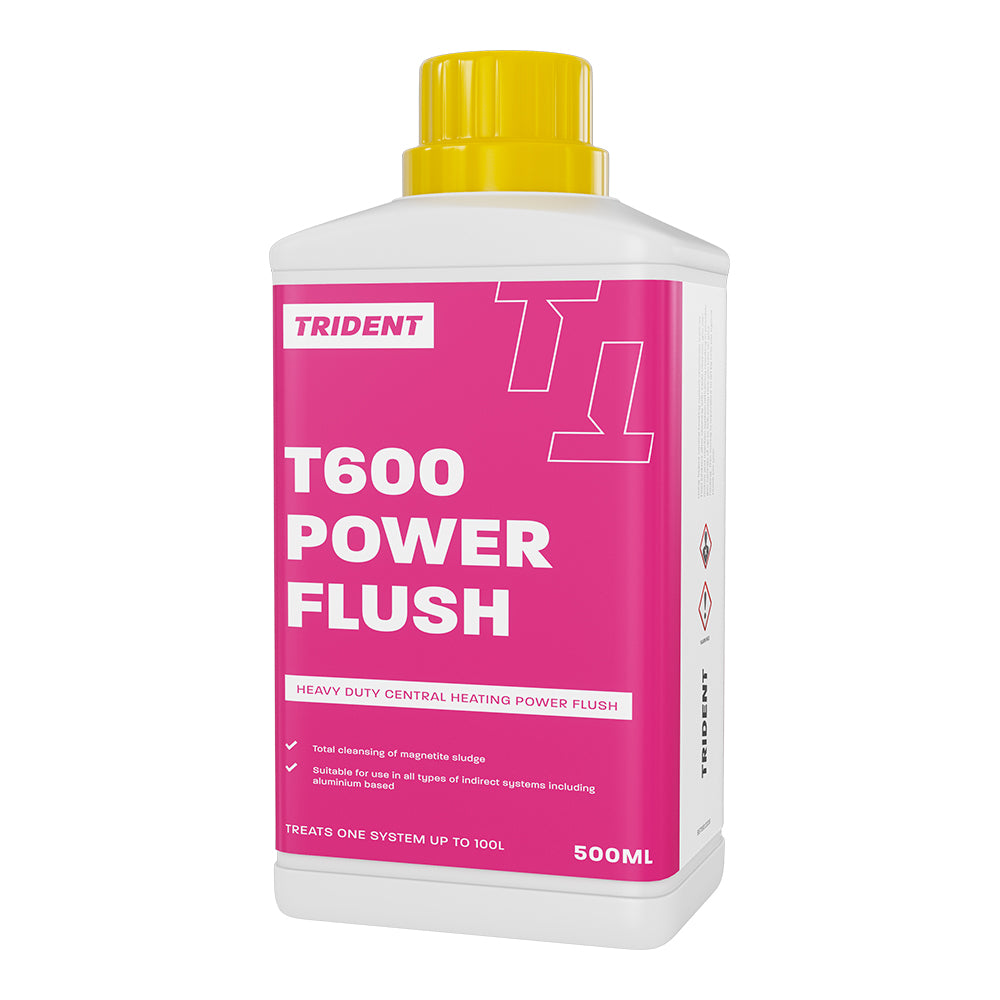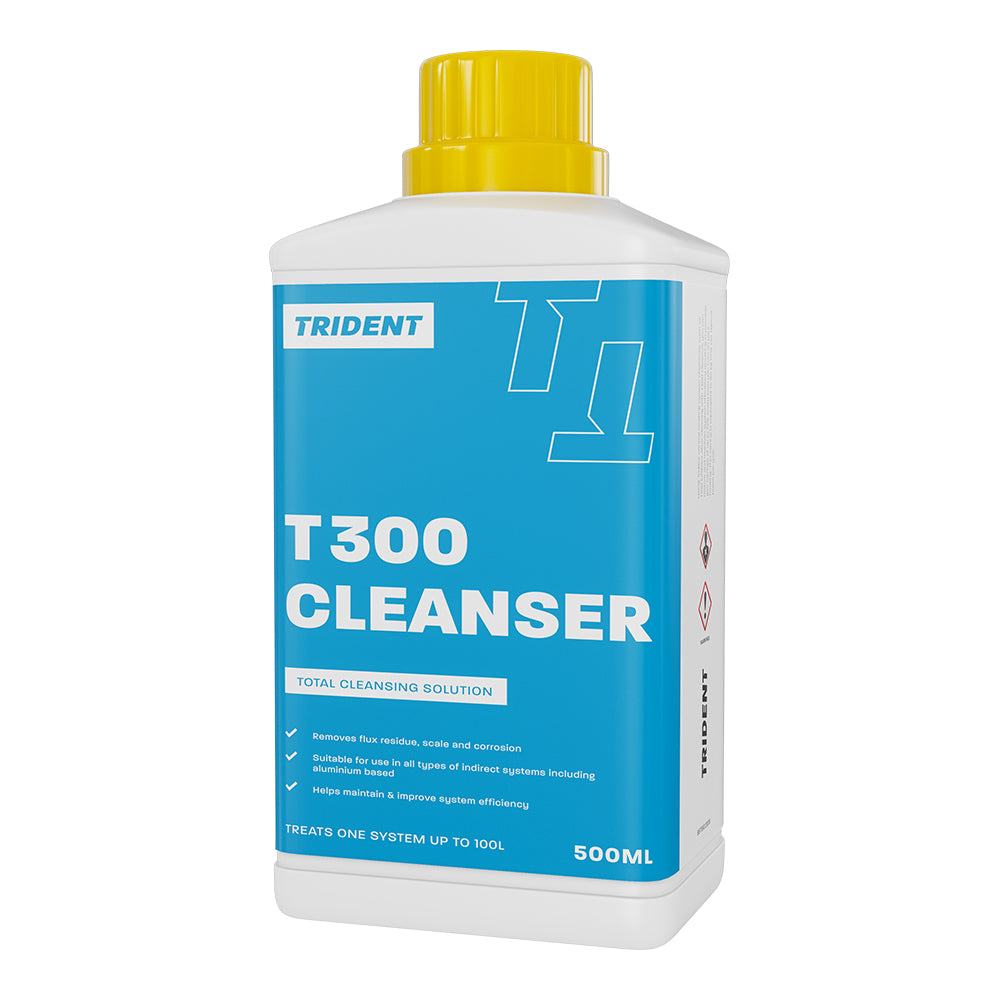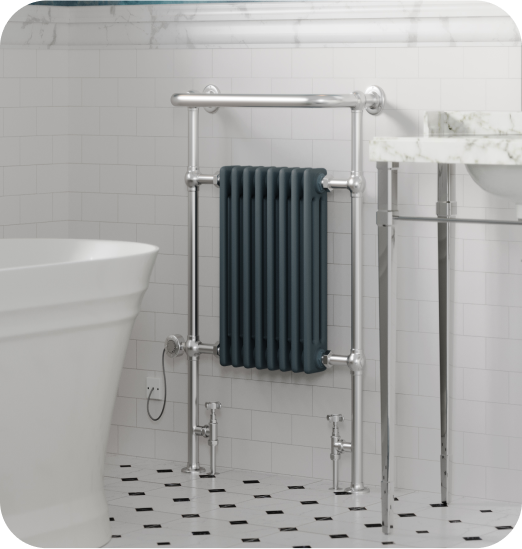How Heat Energy Works
Before we dive in the deep end, we need to understand some basic physics - heat energy moves in any given direction based on the temperature. Energy will move from one object or area to another, based on a temperature difference. The higher the temperature difference the more energy will move. For example: Let's say our room temperature is 20°C and our radiator temperature is also 20°C, the amount of energy that will move from the radiator to the room is 0. If the room is 20°C and the radiator is 21°C, the energy (heat) will flow from the radiator to the room. If the room is 21°C and the radiator is 20°C, the energy would flow from the room to the radiator. The rate of energy transfer that occurs becomes greater where the temperature difference is greater, this is called the temperature gradient. This is why our radiators are hot to the touch, or at the very least, higher than our room temperature - to allow the flow of energy at a sufficient rate for our needs.
How Much Energy Is Needed For A Room
Now we know how heat energy moves, how do we identify the amount of energy required to maintain a room at its target/comfort temperature (this would be the temperature that is set on the room thermostat or TRVs). If you set your thermostat/TRVs to 18°C then less energy is required to reach and maintain that temperature than if set at 20°C. However, the other important factor in the amount of energy required to reach the comfort temperature is the outside temperature. The lower this is, the higher the rate of energy loss from your home and the more energy required from your radiator. When the amount of energy required for a room is calculated, it is done based on an external design temperature - or Winter design temperature - which varies depending on your geographical location. As an example, if you live in Brighton you may use a Winter Design Temperature of -1°C. But, if you live in the Scottish Highlands you may use -6°C. It is also different for air and ground temperatures, but we will just focus on air temperature. The winter design temperature is used to estimate the energy required for the common low winter temperatures to ensure that your heating system can operate in the most efficient way for the majority of the year. There is a lot more to calculating the heat loss of a room, things like insulation, wall type, types of windows, number of external walls etc, are all factors which need to be considered. You have to calculate the heat loss of all of these factors individually to get the room's total heat loss and in turn, heat requirement. The heat loss per metre squared is commonly represented by what is known as a U-Value. Lets calculate a hypothetical room: The room in Brighton needs a radiator, it has 1 external wall and no windows. The wall is 4 metres by 2.5 metres. The u-value for the construction material in place, a cavity wall without insulation, is roughly 1.4 (Watts per metre squared). The calculation for the heat loss per degree of temperature difference is: area of the wall multiplied by the u-value. In this case, Area of wall: 4 x 2.5 = 10 U Value = 1.4 Energy required per degree of temperature difference for the wall: 10 x 1.4 = 14 Watts. Next, we look at our internal comfort temperature and external winter design temperature. In Brighton, we use a winter design temperature of -1°C outside and we are trying to heat the room to 20°C (our comfort temperature). That is a temperature difference of 21°C. So, to find out how much energy is lost through that one wall, we multiply the above: 14 Watts x 21°C = 294 Watts We would then repeat the above for all of the factors in our room. Our handy RadSizer does all of this for you (you’re welcome!). But, if you want to work out your own heat loss, you should do that now, before you move on. We used Radsizer and it told us that our room in Brighton has a total energy requirement of 500 Watts when it is -1 outside and we want to maintain an internal room (comfort) temperature of 20°C. This doesn’t tell us how much energy we actually require to heat the room up to this temperature - just how much is required to maintain it at that temperature which is what we need to understand at this juncture. Why do we need to know this? We need to understand how radiators are sized and how energy output is calculated for a radiator to fully understand how energy moves, but before that we need to know what the different energy requirements are to maintain my room at 20°C when the outside temperature varies. Highlighted in yellow on the chart below was how we designed the room for the property in question and estimated its energy requirement in winter, but as you will notice in the table, where the external temperature is higher (warmer) than -1°C we require less energy to maintain our room temperature at 20°C. We discussed briefly how heat energy works in terms of the energy required to maintain our room temperature at 20°C and now we have a temperature gradient that changes based on the outside temperature.
| External Temperature |
Internal Comfort Temperature |
Temperature Difference |
Room Energy Requirement (Watts) |
| 20 |
20 |
0 |
0 |
| 19 |
20 |
1 |
24 |
| 18 |
20 |
2 |
48 |
| 17 |
20 |
3 |
71 |
| 16 |
20 |
4 |
95 |
| 15 |
20 |
5 |
119 |
| 14 |
20 |
6 |
143 |
| 13 |
20 |
7 |
167 |
| 12 |
20 |
8 |
190 |
| 11 |
20 |
9 |
214 |
| 10 |
20 |
10 |
238 |
| 9 |
20 |
11 |
262 |
| 8 |
20 |
12 |
286 |
| 7 |
20 |
13 |
310 |
| 6 |
20 |
14 |
333 |
| 5 |
20 |
15 |
357 |
| 4 |
20 |
16 |
381 |
| 3 |
20 |
17 |
405 |
| 2 |
20 |
18 |
429 |
| 1 |
20 |
19 |
452 |
| 0 |
20 |
20 |
476 |
| -1 |
20 |
21 |
500 |
| -2 |
20 |
22 |
524 |
| -3 |
20 |
23 |
548 |
| -4 |
20 |
24 |
571 |
| -5 |
20 |
25 |
595 |
How Is A Radiator Sized
We know what you're thinking: height; width; depth, right? Wrong! These are necessary considerations when manufacturing and purchasing a radiator. But they aren't the most important aspect for your home. You can put any size radiator in any room where it will physically fit, but you need it to effectively heat that room. Sadly, many people - including industry professionals - don’t understand (or don’t care about) the importance of heat output. Some retailers are more concerned about the sale than the customer and provide inaccurate heat output information that 'enhances' the radiator but leaves the customer wondering why they're surrounded by shiny new rads but still cold. But never fear - UK Rads is here! To ensure our radiators are effective, we must understand what the radiator heat output means, how it's shown and how this changes based on your heating system. When shopping online or in store, the heat output that the radiator can achieve must be displayed in Delta 50 and Delta 30 at least (other deltas can be shown). You must also be able to see what is known as a KM and N value (which we will cover later). If none of this is displayed, then please don't buy from this retailer. In order to understand what a delta (sometimes shown as “Delta T” or Δ) means, we need to understand how a heating system works. Say you have a Gas Boiler of any type, with a flow temperature set to 75°C, this is the temperature of the water as it enters the radiator (there will be some loss as the water travels to the radiator, but for arguments sake, we will say this is still 75°C). You will then have a return temperature, which must be lower in order to allow time for the heat energy (for each degree of temperature) to leave the water via the radiator and enter the room atmosphere. In this example, the water leaving the radiator is 55°C. We use the flow and return temperatures to calculate the Mean Water Temperature (MWT) across the radiator. This will allow us to create a temperature gradient, which will identify whether the radiator will be able to maintain the energy required for the room comfort temperature (20°C). The calculation is simple, we add the flow and return temperatures together and divide by 2. So in our example: (75 + 55)/2 130/2 = 65°C Mean Water Temperature To find the delta rating of our system, we need to deduct the room comfort temperature (20°C) from our Mean water temperature: 65-20 = Delta 45 Before moving on, let's examine different temperature gradients (Deltas) a bit more. In our example, the mean water temperature is 65°C and the room comfort temperature is 20°C Which, as previously stated, is a temperature difference/gradient of 45°C, and that is what Delta 45 means. If we raise the Mean Water Temperature to 70°C and room comfort temp is still 20°C, then my temperature difference (Delta) is 50. Because of how heat energy works, the same radiator would now give more heat energy into the room than it did at Delta 45 because the temperature difference is greater. If the Mean Water temperature is 65°C and we drop my room comfort temperature to 18°C, then my temperature difference (Delta) is 47. Which again, would result in a higher heat transfer rate from my radiator to the room. Vice versa, if we drop the Mean Water Temperature to 60°C and room comfort temperature is 20°C, my difference (Delta) is 40°C. So less energy transfers into the room - this is also true if I raise my room temperature while keeping the Mean Water Temperature the same. But how do we use all of this to pick the right radiator? Going back to our example, we now know that we have a Delta of 45 and a room energy requirement of 500 watts when it is -1°C outside (we’re in Brighton, remember!). Now, this is where it can all go wrong. Customers often pick a radiator based on the room heat energy requirement (500 Watts) stated at the “industry Standard Delta” which is currently considered Delta 50. If we take this example product, the 1800mm x 272mm Typhoon Single.
We can see a heat output of 528 Watts, that’s bigger than our room requirement. However, that is at Delta 50 (which is also based on a room temperature of 20°C). So if we reverse our above calculation we can find that the mean water temperature to get this heat output is 70°C when the room is at 20°C - 20°C + 50°C (the delta) = MWT 70°C. But for our example, we need Delta 45 not Delta 50. It’s important to note here, that if you have a condensing boiler and want enhanced efficiency, you should be looking for a lower delta to use
- Delta 40 is quite reasonable to get condensing mode and a good heating service. With our example, we could do one of two things. Option 1: Our website shows Delta 40 not Delta 45. But, if we get a radiator with a Delta 40 value that is above 500 watts, that is a good bit of oversizing. Which just means our radiator(s) work more efficiently and we spend less money on heating bills and when we weather compensate we can go a bit lower on the flow temperature. Option 2: We re-calculate the heat output of this radiator to our Delta 45. The Delta 40 output for this Typhoon radiator is only 397 Watts, which is too low for our requirements. Delta 45 is also too low at 461 Watts, so this is not a suitable product for our heating system and heat output requirements. We actually need the one that is a size above (slightly wider) - the 1800mm x 340mm Typhoon Single - which has the following stats: Delta 50 = 659 Watts Delta 40 = 496 Watts Looking at the previous wattage difference between Delta 40 and 45, we know that Delta 45 will be greater than 496 Watts. So, we can be confident that this radiator is suitable for our system and needs. However, if you want to calculate Delta 45 for an accurate wattage value, we take the KM and N values found on Declaration of Performance document (DoPs must be provided to the consumer by law or all relevant information should be listed against the product listing online, in store this should be on the packaging) and do the following: KM x Delta^N (^ means to the power of) We checked the DoP for our 1800mm x 340mm Typhoon Single: KM is 4.4313 N is 1.2788 The Delta we want is 45 That makes our formula 4.4313 x 45^1.2788 (We do powers of first) 45^ 1.2788 = 130.0553 Then we multiply that by the KM 4.313 x 130.0553 = 576 Watts It's bigger than we need, but in the physical world, it is only 7 cm wider and works better for our winter needs (when it is -1°C outside and we want to heat the room to 20°C). To help illustrate the above, and make sure we aren't just covering the easy/common numbers. Let's look at some other deltas for this product:
| Delta |
Radiator Heat output when room is 20°C |
Delta |
Radiator Heat output when room is 20°C |
| Delta 10 |
84 watts |
Delta 31 |
358 watts |
| Delta 11 |
95 watts |
Delta 32 |
373 watts |
| Delta 12 |
106 watts |
Delta 33 |
388 watts |
| Delta 13 |
118 watts |
Delta 34 |
403 watts |
| Delta 14 |
129 watts |
Delta 35 |
418 watts |
| Delta 15 |
141 watts |
Delta 36 |
433 watts |
| Delta 16 |
154 watts |
Delta 37 |
449 watts |
| Delta 17 |
166 watts |
Delta 38 |
464 watts |
| Delta 18 |
179 watts |
Delta 39 |
480 watts |
| Delta 19 |
191 watts |
Delta 40 |
496 watts |
| Delta 20 |
204 watts |
Delta 41 |
512 watts |
| Delta 21 |
217 watts |
Delta 42 |
528 watts |
| Delta 22 |
231 watts |
Delta 43 |
544 watts |
| Delta 23 |
244 watts |
Delta 44 |
560 watts |
| Delta 24 |
258 watts |
Delta 45 |
576 watts |
| Delta 25 |
272 watts |
Delta 46 |
593 watts |
| Delta 26 |
286 watts |
Delta 47 |
609 watts |
| Delta 27 |
300 watts |
Delta 48 |
626 watts |
| Delta 28 |
314 watts |
Delta 49 |
643 watts |
| Delta 29 |
329 watts |
Delta 50 |
659 watts |
| Delta 30 |
343 watts |
|
|
Room Energy Requirement vs Radiator Delta
We know that the room requirement is based on the Winter Design Temperature of your location to ensure your radiators are able to keep your home at a comfortable temperature, during the coldest times of the year. But what Delta, and heat output, do we actually need from our 1800mm x 340mm Typhoon Single during mild months when we still need the heating on but we aren't freezing? Not every room in the home is the same size, so not every radiator will be either. But if we size correctly throughout our example home - using Delta 45 (when it is -1°C outside) to choose radiators that have output values which are roughly 15% higher than our requirement. This will mean that as we lower temperatures on the boiler we have considered the impact to all radiators in the home. For our example, we are also going to say that the earliest we would use central heating is when it is 15°C outside, whether that is when the heating should go on is debatable, but this helps us to demonstrate our point. So, the orange line and below is using central heating and the yellow line is our winter design temperature for Brighton.
| External Temperature |
Internal Comfort Temperature |
Temperature Difference internal vs external |
Room Energy Requirement (Watts) |
Radiator Delta for sample product |
Radiator Heat Output |
| 15 |
20 |
5 |
119 |
Delta 15 |
141 |
| 14 |
20 |
6 |
143 |
Delta 17 |
166 |
| 13 |
20 |
7 |
167 |
Delta 19 |
191 |
| 12 |
20 |
8 |
190 |
Delta 21 |
217 |
| 11 |
20 |
9 |
214 |
Delta 23 |
244 |
| 10 |
20 |
10 |
238 |
Delta 26 |
286 |
| 9 |
20 |
11 |
262 |
Delta 27 |
300 |
| 8 |
20 |
12 |
286 |
Delta 29 |
328 |
| 7 |
20 |
13 |
310 |
Delta 31 |
358 |
| 6 |
20 |
14 |
333 |
Delta 33 |
388 |
| 5 |
20 |
15 |
357 |
Delta 35 |
418 |
| 4 |
20 |
16 |
381 |
Delta 36 |
433 |
| 3 |
20 |
17 |
405 |
Delta 38 |
464 |
| 2 |
20 |
18 |
429 |
Delta 40 |
496 |
| 1 |
20 |
19 |
452 |
Delta 41 |
512 |
| 0 |
20 |
20 |
476 |
Delta 43 |
544 |
| -1 |
20 |
21 |
500 |
Delta 45 |
576 |
| -2 |
20 |
22 |
524 |
Delta 47 |
609 |
| -3 |
20 |
23 |
548 |
Delta 48 |
326 |
| -4 |
20 |
24 |
571 |
Delta 50 |
659 |
This tells us that during the milder months of winter, we need a significantly lower delta heat output from our radiator than we do in the harsher periods of winter. Simple right? Well this is precisely what Weather Compensation is about - balancing the heat output with the required temperature gradients. The above table represents potential, if the world were magic and we could all flip a switch, this is the potential we could get from our room requirement and example radiator. It is easy enough to estimate the mean water temperature by reversing one of the calculations we used earlier - the Delta + room comfort temperature. The problem comes in the real world where we need to consider that there is a pump designed around a flow rate, velocity required for room energy and radiators are already balanced in a certain way. In our example the difference between our flow (75°C) and return (55°C) at Delta 45 was 20°C. If we lower the flow temperature by 30°C (to 45°C), our return temperature will also need to be lower and this, and in turn this decreases the temperature difference/gradient from 20°C, impacting the delta we get and accounting for it. There are a lot of different systems out there and we have to make sure that we are aware of any limitations or requirements before we change anything that was put in place by an engineer. For example, on some systems the same temperature setting controls the central heating and hot water, creating a limit to how far we can drop the flow temperature. In other systems, if we drop the flow temperature too low, we will create costs in other areas - such as the pump. Certain systems will have a limit on what the difference between the flow and return can be, if it gets too close, it could create issues within the boiler that will cost us dearly in the long run. But what we do know is that there is a huge potential for savings given that we can definitely drop our system flow temperature for parts of the year. For condensing boilers, those savings become even greater, as do heat pumps, as the efficiency of the system rises with lower flow and return temperatures. But how can we implement this potential reduction? For a lot of us, this is going to get complicated and too much to work out. So initially, we need a simple method that could work across the board. Then we need a more detailed method, which we have detailed out in our Weather Compensation blog, to help with all these extra considerations. Either way, now that we understand a bit more about radiator physics and how temperature gradients work, we can start using the laws of physics to save some money! The final thing we want to know is…
Does My Radiator Heat Output Need To Be Higher Than My Room Energy Requirement?
The simple answer is yes, by about 10-20%. So even if we lower the flow temperature of our boiler, lowering the radiator delta heat output, whatever that heat output is needs to be 10-20% higher than the room requirement. Like our table below, the radiator heat output is always about 15% higher than our Room Energy Requirement.
| External Temperature |
Internal Comfort Temperature |
Temperature Difference internal vs external |
Room Energy Requirement (Watts) |
Radiator Delta for sample product |
Radiator Heat Output (Watts) |
| 15 |
20 |
5 |
119 |
Delta 15 |
141 |
| 14 |
20 |
6 |
143 |
Delta 17 |
166 |
| 13 |
20 |
7 |
167 |
Delta 19 |
191 |
| 12 |
20 |
8 |
190 |
Delta 21 |
217 |
| 11 |
20 |
9 |
214 |
Delta 23 |
244 |
| 10 |
20 |
10 |
238 |
Delta 26 |
286 |
| 9 |
20 |
11 |
262 |
Delta 27 |
300 |
| 8 |
20 |
12 |
286 |
Delta 29 |
328 |
| 7 |
20 |
13 |
310 |
Delta 31 |
358 |
| 6 |
20 |
14 |
333 |
Delta 33 |
388 |
| 5 |
20 |
15 |
357 |
Delta 35 |
418 |
| 4 |
20 |
16 |
381 |
Delta 36 |
433 |
| 3 |
20 |
17 |
405 |
Delta 38 |
464 |
| 2 |
20 |
18 |
429 |
Delta 40 |
496 |
| 1 |
20 |
19 |
452 |
Delta 41 |
512 |
| 0 |
20 |
20 |
476 |
Delta 43 |
544 |
| -1 |
20 |
21 |
500 |
Delta 45 |
576 |
| -2 |
20 |
22 |
524 |
Delta 47 |
609 |
| -3 |
20 |
23 |
548 |
Delta 48 |
326 |
| -4 |
20 |
24 |
571 |
Delta 50 |
659 |
We have conducted some thought exercise style testing with this notion (Einstein style!), and found 15% to be optimal, beyond 20% you get the benefit of lower flow temperatures, but you don’t get any noticeable benefit to room heating time, which is a significant factor. As we know, even when your central heating is on and your radiators are hot, there is still heat loss from windows, walls, doors etc. Which is why it's factored into the room's heat requirement. This input vs output relationship is also why it's important to have a radiator output that is higher than the heat requirement. Looking at the yellow line above, let's imagine that we managed to purchase a radiator with a heat output of exactly 500 Watts* (instead of 576) at Delta 45, the same as the room requirement. *We need to understand what Watts actually means to us, we could get technical and complicated here, but all we need to know is that 1 Watt = 1 Joule per second, and that joules are how we measure the required energy for a temperature. If our room is at 19.9°C, we have a room heat loss of about 497 Joules per second. Our radiator input (heat output) will be slightly higher than 500 watts at this point (remember how temperature differences impact flow of energy, because our room isn't yet at 20°C, the transfer of heat will be greater), so lets say 505 Watts or 505 Joules per second. The amount of energy available to raise the the room to our comfort temperature of 20°C is simply, the heat input from our radiator (in joules) minus the heat energy loss (in joules): Room Input Energy (from radiator) = 505 Joules Per second Room Energy Lost = 497 Joules per second Available energy to raise room temperature from 19.9°C to 20°C = 8 joules per second. Now, a significant issue here is the volume of air in my room. Much like water, air needs energy to raise in temperature. This is known as a specific heat capacity. We won’t bore you with too many specifics on how to calculate this, we are working on something to do this for you in the future - so keep your eyes peeled! In the meantime, we’ll just show you how it's factored in. Let's say that 1 cubic volume of air is a specific heat capacity of 720 Joules, that is the amount of energy required to raise the air temperature by 1 degree. In our example, we want to raise the temperature by 0.1 degree, so 72 joules of energy is needed to raise that 1 cubic volume of air to 20°C. If we have a room that is 30 metres3 (4 metres by 3 metres by 2.5 metres) then the calculation is: 30 x 72 So we need 2160 joules of energy to raise the entire room by 0.1°C. We know that we have 8 joules per second surplus (from our input vs output). 2160 Joules / 8 = 270 seconds (4 minutes and 30 seconds) to get the room temperature up to 20°C. Not too bad right? But remember, as the room temperature raises closer to our radiator temperature, our radiator heat output drops. So if the room temperature is 1°C, its -1°C outside, and the radiator mean water temperature is 65°C, we have more output than the 567 Watts at Delta 45. The problem is when the room gets to 19°C, how long, in total, does it take to raise the temperature of the room by 1 degree with a Radiator that has a 500 Watt heat output? Well let’s find a radiator that has close to 500 watts heat output at delta 45 and find out! Enter the stunning 600mm x 544mm Typhoon Double:
| External Temperature |
Internal Comfort Temperature |
Temperature Difference |
Room Energy Requirement (Watts) |
Radiator Delta |
Radiator Heat Output at Delta 45 |
Surplus energy (Radiator - room) |
Energy to raise room temp by 0.1 Degree |
Time to do this (in seconds) |
| -1 |
19 |
20 |
476 |
Delta 46 |
518 |
42 |
2160 |
51.42857 |
| -1 |
19.1 |
20.1 |
479 |
Delta 45.9 |
516 |
37 |
2161 |
58.40541 |
| -1 |
19.2 |
20.2 |
481 |
Delta 45.8 |
515 |
34 |
2162 |
63.58824 |
| -1 |
19.3 |
20.3 |
483 |
Delta 45.7 |
513 |
30 |
2163 |
72.1 |
| -1 |
19.4 |
20.4 |
486 |
Delta 45.6 |
512 |
26 |
2164 |
83.23077 |
| -1 |
19.5 |
20.5 |
488 |
Delta 45.5 |
511 |
23 |
2165 |
94.13043 |
| -1 |
19.6 |
20.6 |
490 |
Delta 45.4 |
509 |
19 |
2166 |
114 |
| -1 |
19.7 |
20.7 |
493 |
Delta 45.3 |
508 |
15 |
2167 |
144.4667 |
| -1 |
19.8 |
20.8 |
495 |
Delta 45.2 |
506 |
11 |
2168 |
197.0909 |
| -1 |
19.9 |
20.9 |
498 |
Delta 45.1 |
505 |
7 |
2169 |
309.8571 |
| -1 |
20 |
21 |
500 |
Delta 45 |
504 |
4 |
2170 |
542.5 |
| Total Time |
1730 |
The total of the final column is 1730 seconds, or half an hour, to raise the room temperature by 1°C from 19°C to 20°C. Let’s compare to our radiator that was 15% bigger (in heat output) than our room requirement at the delta 45:
| External Temperature |
Internal Comfort Temperature |
Temperature Difference |
Room Energy Requirement (Watts) |
Radiator Delta |
Radiator Heat Output at Delta 45 |
Surplus energy (Radiator - room) |
Energy to raise room temp by 0.1°C |
Time to do this (in seconds) |
| -1 |
19 |
20 |
476 |
Delta 46 |
593 |
117 |
2160 |
18.46154 |
| -1 |
19.1 |
20.1 |
479 |
Delta 45.9 |
591 |
112 |
2161 |
19.29464 |
| -1 |
19.2 |
20.2 |
481 |
Delta 45.8 |
589 |
108 |
2162 |
20.01852 |
| -1 |
19.3 |
20.3 |
483 |
Delta 45.7 |
588 |
105 |
2163 |
20.6 |
| -1 |
19.4 |
20.4 |
486 |
Delta 45.6 |
586 |
100 |
2164 |
21.64 |
| -1 |
19.5 |
20.5 |
488 |
Delta 45.5 |
585 |
97 |
2165 |
22.31959 |
| -1 |
19.6 |
20.6 |
490 |
Delta 45.4 |
583 |
93 |
2166 |
23.29032 |
| -1 |
19.7 |
20.7 |
493 |
Delta 45.3 |
581 |
88 |
2167 |
24.625 |
| -1 |
19.8 |
20.8 |
495 |
Delta 45.2 |
580 |
85 |
2168 |
25.50588 |
| -1 |
19.9 |
20.9 |
498 |
Delta 45.1 |
578 |
80 |
2169 |
27.1125 |
| -1 |
20 |
21 |
500 |
Delta 45 |
576 |
76 |
2170 |
28.55263 |
| Total Time |
251 |
The total time for that final degree raise in room temperature for our example is 251 seconds - 4 minutes 11 seconds. We think you’ll agree, that's quite a difference! While it's impressive, it's pretty mute if you rarely need to raise your room temperature by 1°C. So the next question is, how often in my heating cycle does this happen? Well, at 20°C our room is losing roughly 500 joules per second when it’s -1°C outside, so how long does it take for our room temp to drop to 19°C? This is quite difficult to work out on paper, as even though your radiator is not receiving new hot water, it is still outputting energy from the water inside it, it will just be at a quickly declining rate. The material and water content also then impacts the amount of time it will take to raise the room back up to temperature, as the water and the material are losing the energy they need to transfer energy to the room. So the amount of water in the radiator and the weight of the radiator is going to impact this. But we could probably say for our room, if the radiator heat output is equal (or close) to the room heat output requirement at the delta (so our 500 watt radiator at Delta 45 in our room that needs 500 watts), then 18 minutes wouldn’t be far off. So in 18 minutes time, the boiler will come back on for at least 30 minutes (as both the radiator material and mean water temperature are going to rise to create the temperature gradient required for our heat output). If the radiator is 15% oversized (like our Typhoon with 576 Watts at Delta 45), then it is probably closer to 30 minutes before the room loses 1°C, after which the boiler will come on for at least 5 minutes or so. Again, the radiator material and mean water temperature will be raised to create the temperature gradient needed. Our RadSizer is currently being improved to cater for this scenario and advise on expected heating performance based on how much you oversize. The full physics required to calculate and understand this is very complicated. So, in this blog, we have only touched on variables that are considered. What about current advice of dropping boiler temperature? This is a significantly important point around current advice, especially dropping boiler temperature. It needs to be done with a bit of consideration. You need to monitor energy usage because if you drop the temperature too much, you may create scenarios where the room eventually gets to temperature, but it takes a long time and both the pump and the boiler will be using energy in that time. So those of you who have already dropped too low, you may have simply moved your heating costs to a different area of the system rather than lower them and it might actually be worth turning it up a few degrees. While the energy requirements of the room is pretty much the same either way, things like pump on time and boiler burn time, along with excess fuel wastage are impacted by how much the radiator heat output is over the size of the room. So without considering a few more factors (like the ones we have in our blog for weather compensation), you may not be able to make very good or reliable savings in this area by simply dropping the boiler temperature a lot, it is all about finding balance which we have put the effort into helping you get to!




